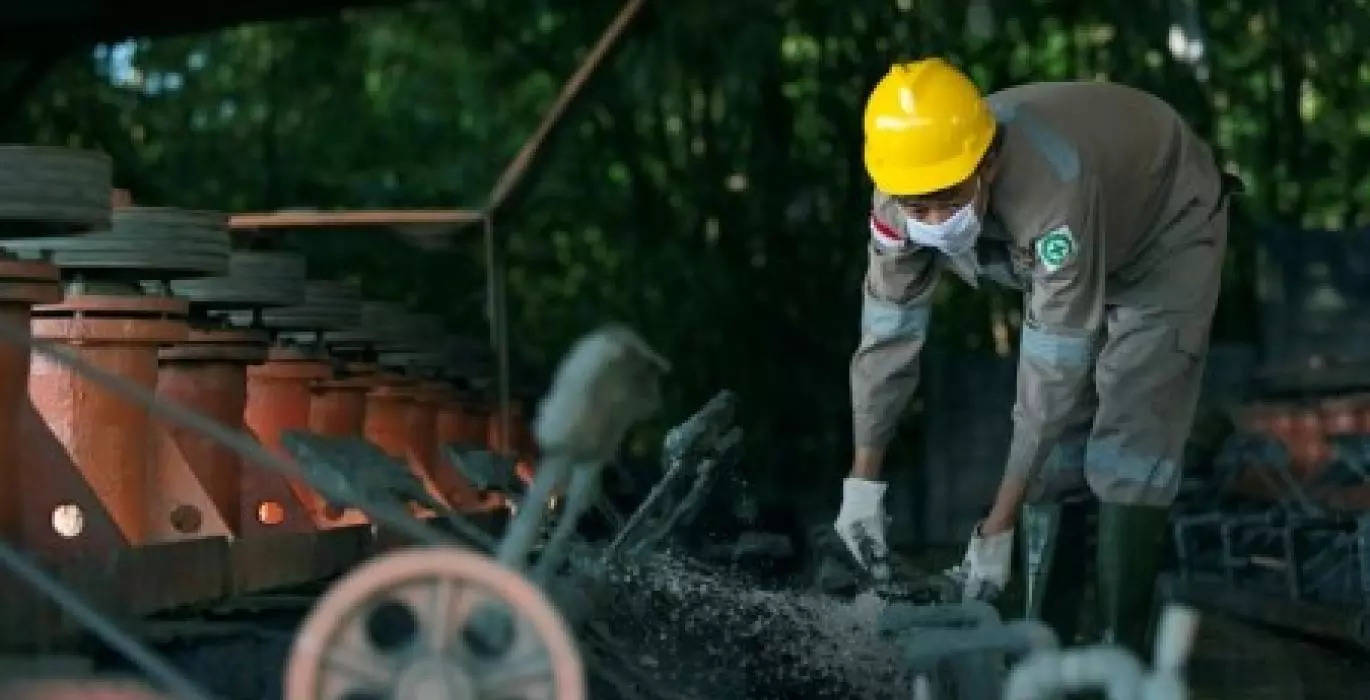[ad_1]

By Andy Home
LONDON: The puzzle facing the zinc market is whether demand or supply will fall hardest this year.
Both were down in the first half of the year, according to the latest assessment by the International Lead and Zinc Study Group (ILZSG). An estimated 3.0% drop in global usage marginally outpaced a 2.6% slide in global production of refined metal.
The figures are preliminary and subject to revision but they capture zinc’s conflicting dynamics and increasingly fractured pricing.
The London Metal Exchange (LME) three-month price is currently trading around $3,080 per tonne, a long way off March’s record high of $4,896, as the market prices in Chinese demand weakness and the rising prospect of European recession.
LME time-spreads, however, remain volatile due to low stocks availability and physical buyers are still paying record premiums to get hold of metal.
DEMAND HIT
Zinc’s usage hit so far this year has come largely from China, where a troubled property sector has depressed demand for steel, including zinc-coated galvanized steel.
China’s national steel production fell by 6.4% year-on-year in the first seven months of 2022, according to the World Steel Association https://worldsteel.org/media-centre/press-releases/2022/july-2022-crude-steel-production/.
Attempts to revitalise the flagging commercial construction sector are being stymied by a combination of continued rolling COVID-19 lockdowns and power rationing in drought-affected parts of the country.
Broader manufacturing activity has also taken a hit, both official and Caixin purchasing managers indices indicating a contraction in factory activity last month.
Demand fears have now spread to Europe, which seems to be facing imminent recession due to soaring power prices.
The outright zinc price mirrors the macro pressures playing out across the LME base metals complex and is in part down to shifts in fund positioning as money mangers reduce their long exposure.
Investment funds have slashed their net long zinc position from a record high of 62,744 lots in April to 29,053 as of the Sep. 9 close. Other financial institutions, a category that includes pension funds and insurance players, turned net short of zinc in June for the first time since the LME started publishing a Commitments of Traders Report in 2018.
The position has since flipped back to a small net long of 5,024 lots, but it’s now a fraction of what it was at its November 2019 peak of 42,334 lots.
LOW STOCKS
The outright price is falling despite low exchange inventory.
LME stocks currently stand at 75,700 tonnes, down by 123,625 tonnes on the start of the year. Almost a third of the remaining tonnage is earmarked for physical load-out.
Shanghai Futures Exchange inventory has been sliding as well, hitting a fresh 2022 low of 58,407 tonnes this week.
The Shanghai forward curve is in backwardation and so too is the London market. The LME cash premium over three-month metal has eased from its June peak of $218 to $27.50 per tonne at Thursday’s close but the recent heightened spread volatility can be expected to continue until inventory rebuilds in a meaningful way.
LME inventory in Europe continues to comprise a single lot at the Spanish port of Bilbao, while U.S. warehouses hold just 2,100 tonnes, all of it cancelled and due to depart.
Both regions remain gripped by acute tightness. European buyers are currently paying record premiums of over $500 per tonne on top of the LME price to secure spot units, according to Fastmarkets. That’s five times more than they were paying at the start of 2021.
SUPPLY HIT
Europe is at the epicentre of the global zinc supply hit as smelters struggle to cope with soaring power prices.
Nyrstar’s 315,000-tonne-per-year Budel smelter in the Netherlands is the second to close fully after Glencore placed its Italian smelter on care and maintenance at the end of last year.
“It is clear that European smelter cuts will come deeper and sooner than we anticipated,” said analysts at Citi, forecasting regional capacity utilisation will drop to 66% over the second half of this year from 83% in 2021. (“Metals Weekly”, Aug. 18, 2022)
Power problems have also hit Chinese production in the last couple of weeks with temporary curtailments due to rationing in Sichuan province earlier this month.
Most of that capacity has already restarted but Chinese refined zinc production is struggling this year, down 3.3% year-on-year in the January-August period, according to Shanghai Metal Market.
SHIFTING BALANCE
Zinc’s micro dynamics are shifting fast and at the moment it seems that the demand hit is outpacing the supply hit.
The global market generated a supply surplus of 27,000 tonnes in January-June, according to the ILZSG, which was expecting a significant deficit of 290,000 tonnes this year at its April meeting.
While refined production has underperformed the Group’s forecast for 0.9% growth this year, demand has deviated far further from expectations. An April forecast for 1.6% growth in usage this year now looks highly optimistic given the 3.0% estimated slide over the first six months of the year.
It’s the demand outlook that’s weighing on the outright zinc price. But the accumulating supply problems are preventing any rebuild in exchange inventory and keeping physical supply-chains tight.
Is zinc bullish or bearish right now? The answer depends on whether you ask a futures or a physical trader.
The opinions expressed here are those of the author, a columnist for Reuters.
Read More:
[ad_2]
Source link









